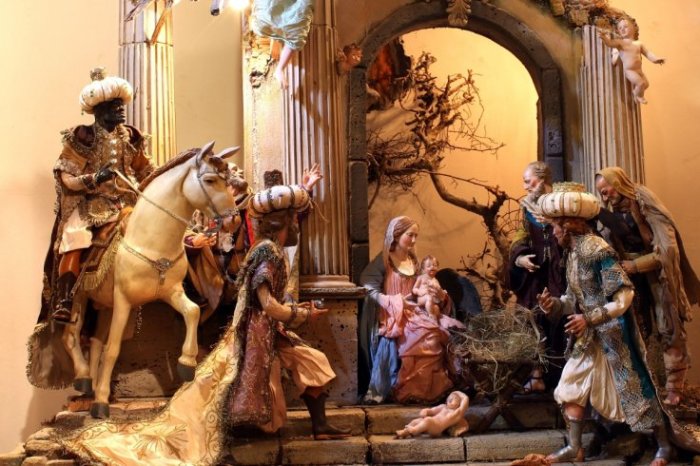The Dark Side of Christmas You Probably Don't Know About

Most people have seen one or more versions of Charles Dickens' A Christmas Carol.
Hands down, it is among my favorite Christmas tales: the story of Ebenezer Scrooge having his conscience reawakened through the apparition of his former partner, Jacob Marley, and the ghosts of Christmases past, present and future.
I like the characters.
I like the Victorian-era Christmas charm, complete with frosted windows, mistletoe and plum pudding.
I love the streets of Old London.
But when I first read the novel itself, after viewing various versions of the movie, I was shocked. Scrooge was not the buffoonish, almost cartoon-like character some of the movies made him out to be.
He was genuinely evil. Cruel. Malicious. He was a dark and sinister man. The story actually reads more like a Stephen King novel.
When you study the era itself that Dickens wrote about (he published A Christmas Carol in 1843 as a social statement against harsh child labor practices) you realize that it was dark and evil, as well.
Historian Lisa Toland wrote a fascinating essay on the reality behind the story.
Almost 75% of London's population was considered working class, many of them children laboring in the factories. In fact, every member of a family had to work in order to survive. Dickens himself worked as a young boy to support his family while his parents were in debtor's prison.
The time was known as the "Hungry Forties" because there was a depression along with a time of poor harvests. The London skyline was little more than smokestacks putting out clouds of sooty grit that covered rooftops and the cheeks of the young chimney sweeps.
It was the coal-dependent nature of these factories that created the famed London Fog. It wasn't fog at all, but a combination of smoke, soot and grit. The streets were covered in rainwater, the contents of chamber pots, and animal waste. Rats were abundant.
Small, often emaciated children sold flowers and matches while the wealthy class' horse-drawn carriages swept past. London's poor were forced into shrinking housing districts. Multiple families lived in single rooms in rundown buildings.
That was Dickens' London.
And people had turned a blind eye because supposedly there were "services." When two men ask Scrooge for money, to which he replies, "Are there no prisons? And the Union workhouses? Are they still open? ... The Treadmill and the Poor Law are in full vigor, then?", there is much that we fail to understand.
What makes Scrooge's comments so biting is that the Poor Law, with its accompanying workhouses, were despised by the poor. The driving principle was to make the conditions in those places worse than how they would have lived and worked had they had a job. And in trying to determine who did deserve to go there, the group that fell through the cracks was children. The father or mother would be sent to the workhouse, leaving the children alone to beg in the streets.
Or worse.
If you died while laboring in a workhouse, your body was automatically turned over for dissection. You wouldn't even receive a burial. The conditions were so bad and people there were treated so poorly, that many of London's poor chose to beg on the streets or enter into prostitution in order to avoid the workhouses.
From that darkness, Dickens gives us a tale of redemption.
The story of someone being saved.
There is another story we tend to romanticize.
We've all seen the Christmas cards that go out: pictures of Mary in flowing robes, gentle animals gazing lovingly down on the baby who is always blue-eyed, blonde-haired and, while supposedly newborn, has the look and weight of a six-month-old.
That's not the way it was.
Mary and Joseph were desperate to find a place for her to give birth, and couldn't find one. They ended up in an outdoor livestock area. Unclean, unkempt, unwelcome. Tradition – dating back to Justin Martyr in the second century – says it was probably some kind of cave. Smelly, damp, cold.
They had to use a feeding trough as a bassinette. The word "manger" is very warm and fuzzy, but don't romanticize it. A manger was a feeding trough for the animals.
This was a desperately stark and sad scene.
And lonely.
The Bible tells us that Mary wrapped the baby in cloths. That was common for the day. Long strips of cloth were used to wrap the baby tight and keep their legs and arms straight and secure. The process is called swaddling.
It tells us something of the lonely nature of Mary's motherhood that Luke records that she was the one who wrapped Jesus up after His birth—there was no midwife or relative helping, which would have been the norm.
And she was young. Very young.
Engagement usually took place immediately after entering puberty, so Mary may have just entered her teens—13, 14 or, at the most, 15.
Another story about being saved.
Another story that can be romanticized, but was very, very real.
Real in a way that drives us to our knees to marvel at God come to Earth to save... us.
Dr. James Emery White is the founding and senior pastor of Mecklenburg Community Church in Charlotte, NC, and the ranked adjunctive professor of theology and culture at Gordon-Conwell Theological Seminary, where he also served as their fourth president. His latest book, Meet Generation Z: Understanding and Reaching the New Post-Christian World, is available on Amazon. To enjoy a free subscription to the Church & Culture blog, visit ChurchAndCulture.org, where you can view past blogs in our archive and read the latest church and culture news from around the world. Follow Dr. White on twitter @JamesEmeryWhite.
Originally posted at Church and Culture.




























